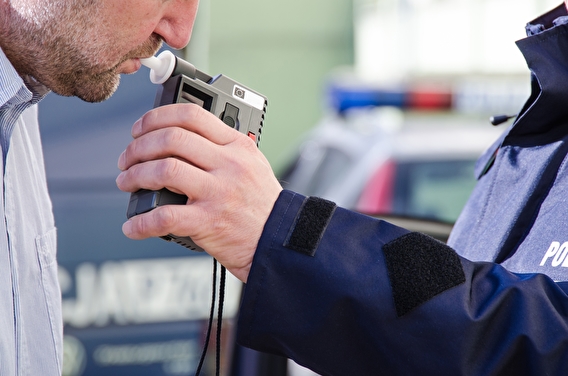
Traffic crashes caused by alcohol-impaired driving are a leading cause of death and injury in the United States. A recent U of M study analyzed the effectiveness of several law enforcement strategies to determine how well they work—and ultimately, help agencies prioritize their enforcement efforts.
Sobriety checkpoints and saturation patrols are common enforcement strategies, but research about their effectiveness is limited. Overservice laws, which prohibit the sale of alcohol to already-intoxicated customers, are another strategy and were of particular focus in this study.
“Bars and restaurants are the source of last drink for approximately half of drivers stopped for alcohol-impaired driving,” says Traci Toomey, professor in the Division of Epidemiology and Community Health at the U’s School of Public Health and the project’s principal investigator. Previous studies found that enforcing overservice laws was a potentially effective way to reduce binge drinking at its source, she says.
The research team conducted a survey of police and sheriff agencies in 1,082 communities across the US in 2010. The survey asked whether the agencies enforced overservice and open-container laws and whether they conducted sobriety checkpoints or saturation patrols within their jurisdictions.
The survey data was then used to assess the relationship between reported use of the enforcement strategies and counts of fatal alcohol-impaired traffic crashes from 2009 through 2013 within the agencies’ jurisdictions. Crash data was obtained from the National Highway Traffic Safety Administration’s Fatality Analysis Reporting System. The researchers also analyzed the data separately by agency type (police or sheriff) and community type (small town, rural, urban, or suburban) using US census data.
The researchers found some evidence that overservice enforcement by police agencies is associated with lower rates of alcohol-impaired traffic fatalities in urban and suburban jurisdictions, small towns, and rural areas.
Saturation patrols conducted by police agencies were also generally associated with lower rates of alcohol-impaired traffic fatalities in small town and rural areas. Communities where sobriety checkpoints were conducted had lower rates of crashes, though the results were not statistically significant.
According to the team’s final report, “These findings suggest that overservice enforcement and saturation patrols should be further assessed as important enforcement tools as communities continue to address alcohol-impaired driving.”
The report notes the study’s limitations. There are different types of overservice enforcement, for example; police might conduct random inspections, walk-throughs, or blood alcohol concentration testing at bars and restaurants to make alcohol servers more wary of overserving patrons. The study did not individually study these methods.
The researchers also did not take into account the frequency with which various law enforcement strategies were employed; sobriety checkpoints tend to be conducted relatively frequently, whereas overservice enforcement tends to be used less than once per month.
Still, Toomi says, “The project is a useful tool for helping to prioritize law enforcement efforts and provides a stepping-off point for future research.”
The project was supported by a grant from the National Institute on Alcohol Abuse and Alcoholism. An article about the research was published in the journal Traffic Injury Prevention in June 2021.
Writer: Sophie Koch


